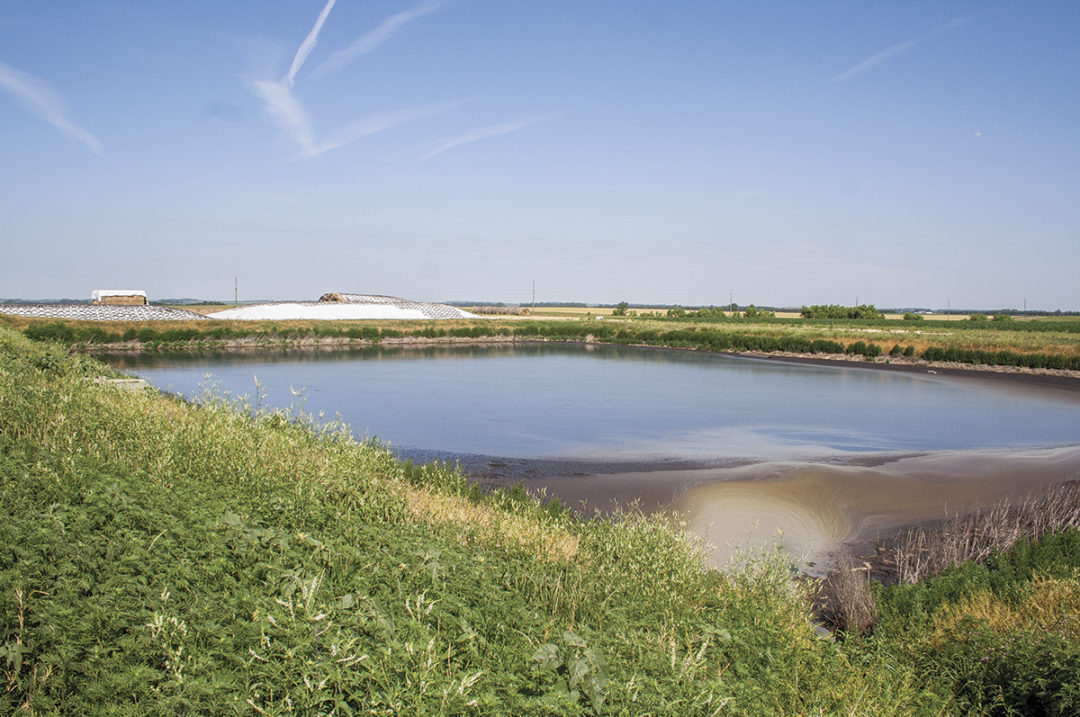There are several ways manure can be properly stored and handled that is safe for cattle, people and soil, while reducing greenhouse gas (GHG) emissions and odor. When considering which practice is right for a farm, one should keep in mind the role the manure microbiome plays in transforming nutrients to potentially harmful gases.
“The environmental benefits of properly handling manure are numerous,” says Daniele Aspesi, chief operating officer of Save Our Planet s.r.l., the Italian-based manufacturing company for U.S.-based Resonant Technology Group. “To get there, we have to condition the microbiome in these different systems and work with those existing conditions.”
Microbes found in manure feed on the remaining nutrients from digested fibers and turn them into gaseous emissions, such as nitrous oxide and methane. A byproduct of this process is also the odor associated with large supplies of slurry.
“It’s a natural process,” Aspesi says.
Marco Poggianella agrees.
“Understanding that microbes are the key to correct manure management and knowing not to disrupt that activity is essential for farmers,” says Save Our Planet’s founder.
GHG emissions and consequently the odor associated with manure storage are controlled and mediated by the microbiome, regardless of the storage technique. Within the slurry storage, there are multiple layers of microbes; the ones found deep within the microbiome use their anaerobic properties to release the GHGs.
Through the industry’s latest technology, the microbiome can be conditioned to metabolize the manure nutrients differently, resulting in reduced GHG emissions and odor, and creating a more neutral pH byproduct.
“Instead of fermenting and creating ammonia and nitrous oxide, for example, [this process] can help the bacteria store nitrogen within their own molecular structures,” Poggianella says. “Then, when that manure is applied to the field, it doesn’t release those natural compounds all at once because they’re embedded in the microbial structure.”
Rather, Poggianella says, the manure microbes are consumed by soil microbes, which helps facilitate improved soil health and nutrient uptake in plants.
A study released by the University of Milan, working in concert with University of California – Davis showed significant GHG emission reduction after three months of following a process of using a microbe conditioner in liquid manure storage. The results of the trial indicated up to 80% reduction in methane and 75% reduction in carbon dioxide emissions without accumulating nitrates in the liquid manure.
Aspesi says a creamery in the Pacific Northwest has noted similar results after working with their farms’ manure storage microbiomes for odor mitigation. The creamery adopted the technology following public scrutiny.
“The [creamery’s] facilities were in excellent condition and consumers enjoyed their products, but it was receiving complaints that the smell from neighboring fields was sometimes very pungent,” he says. “It’s no longer an issue, which is great because odor is a concern that is becoming more problematic for the dairy industry as people are exploring the industry and wanting to know more about it.”
Both Aspesi and Poggianella attest the same problems are faced by dairy producers in Europe.
“Also, from an environmental standpoint, liquid manure storage, handling and distribution can create a few problems that farmers nowadays are facing,” Poggianella says.
If not addressing GHG emissions at the source of storage, there are a handful of other ways to properly mitigate the spread of those gases. Techniques such as solid-liquid separation, biodigesters to produce renewable natural gas or electricity, and immediate injection of manure into the soil are all viable options.
However, odor could remain a concern and GHG development is not entirely negated. These techniques also often come with a hefty price tag with the installation of equipment.
“The bottom line is that lagoon management is much trickier than it seems to be,” Aspesi says. “There are several solutions farmers can consider, but there are also setbacks with each solution. At the core, farmers need to be addressing the microbe environment and how they can work with what’s in the manure.”
Aspesi notes that some Canadian farmers who addressed GHGs in the manure microbiome recorded an average of 60% less energy costs compared to their previous manure management practices.
“Manure management is microbially mediated,” he says. “Whatever you do to either promote or disrupt the microbial population within the manure is going to have an effect on the quality and the quantity of your emissions.”










